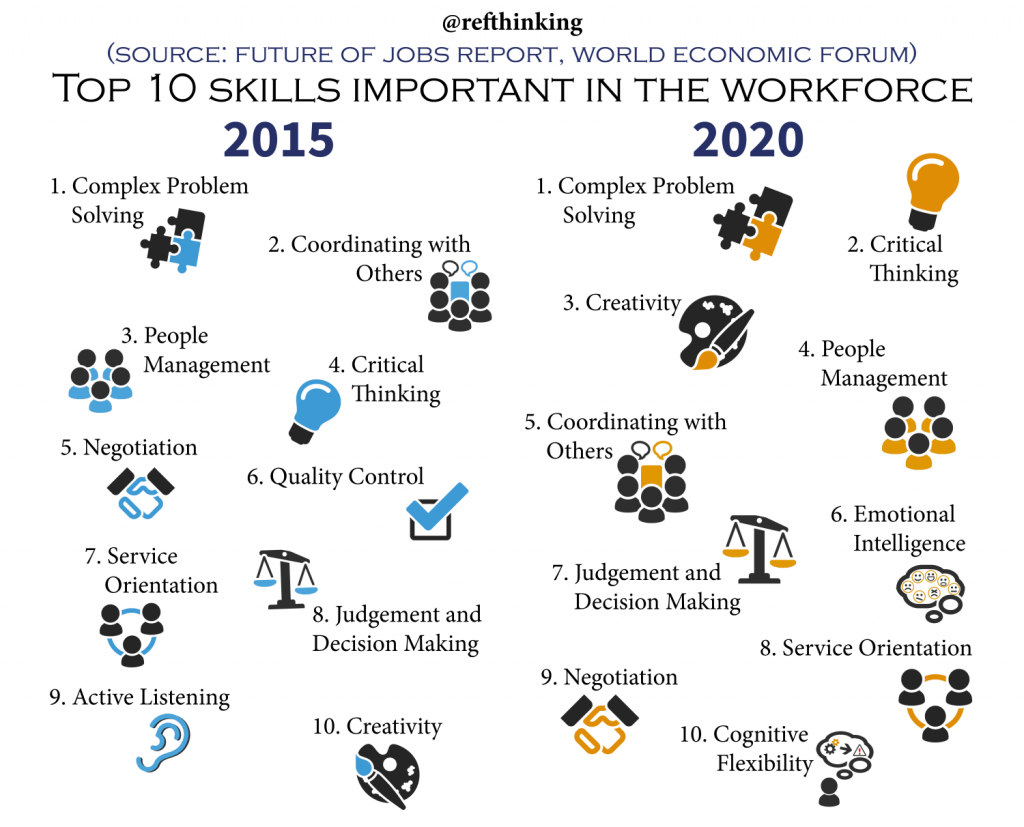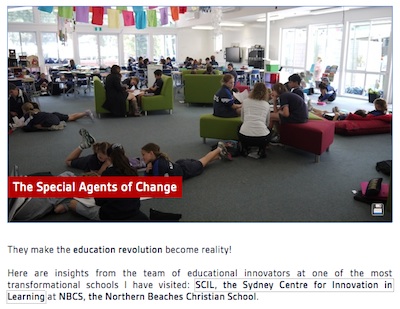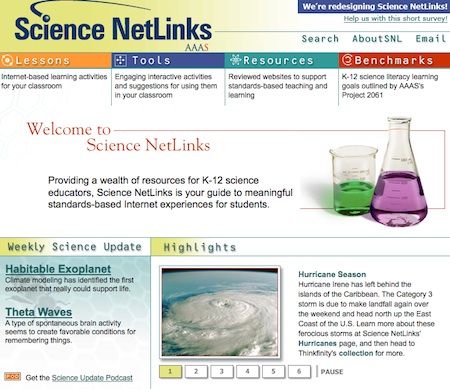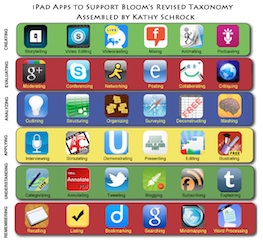An interesting blog post by @refthinking giving us much to ponder about. I know that the collaborative, differentiated method of learning with Guided Inquiry Design we do at Broughton certainly assists students to develop many aspects of the skills mentioned here. According to educational technology researcher Dr. Ahmed Kharrufa, this list was ‘formed by the World Economic Forum following their Future of Jobs report’.
Tag Archives: thinking curriculum
Learning shifts bring change
Engage students with technology
Kelly Walsh shares ’10 highly engaging uses of technology in the classroom, along with dozens of tools and resources for implementation’ in 10 of the Most Engaging Uses of Instructional Technology (with Dozens of Resources and Tools). This is a great place to explore for new ideas as the new school year begins.

Flipped Classroom explained
Educational Technology and Mobile Learning have posted a graphic and two videos to explain what in entailed in ‘flipping’ your classroom. It is one of the best explanations I have seen. As personal technology use expands in our school with the implementation of BYOD, Flipped Classroom is now a possibility.
“Flipped classroom or flipped learning is a methodology, an approach to learning in which technology is employed to reverse the traditional role of classroom time. If in the past, classroom time is spent at lecturing to students , now in a flipped model, this time is utilized to encourage individualized learning and provide one-on-one help to students.”

Learning frameworks and Guided Inquiry
Champlain Valley Union High School have sent this infographic via their Twitter feed. It visually illustrates the important role of Critical Thinking in learning.

So many different learning frameworks and discussions are taking place but the more I look at them and compare them the more I realise just how encompassing the Guided Inquiry Design Process is – as it embeds all elements found in the others.
During Guided Inquiry students discover ‘content’ according to their interest in a topic area then go on to analyse and finally to share and evaluate their learning. This infographic illustrates this process very well.
In the Guided Inquiry Design Process, assessment occurs throughout the whole process – Assessment ‘for’ learning,’in learning’ and ‘of learning’. Students share in Inquiry circles at various stages and all learning is transparent and shared. The support of the teacher and teacher librarian make it a truly collaborative experience.
Teach for the whole brain
Half-Brain Teaching Isn’t Enough Infographic
“In today’s societies there is a lot of focus on the logical and analytical brain functions. Many schools are cutting the ‘extras’ like art and music. However, students need to be well rounded and really need subjects like those to be considered more than ‘extra’, and while there are many people fighting to keep these programs in schools, the international economy and jobs outlook is demanding more focus on STEM.”

Find more education infographics on e-Learning Infographics
The more you use your brain the more it grows
The Learning Myth: Why I’ll Never Tell My Son He’s Smart by Salman Kahn from the Kahn Academy looks at ways to ‘grow our intelligence’. With such easy access to resources and activities the potential is there to grow our ‘mindset’.
Researchers have known for some time that the brain is like a muscle; that the more you use it, the more it grows. They’ve found that neural connections form and deepen most when we make mistakes doing difficult tasks rather than repeatedly having success with easy ones.
Making projects real
The MindShift post by Christina Farr No Courses, No Classrooms, No Grades — Just Learning, describes how some students in the USA are taking time out of school to enrol in project-based learning that pairs them with real projects of problems that need solving.

The NuVu Studio describes their program:
“NuVu is a full-time magnet innovation center for middle and high school students. NuVu’s pedagogy is based on the architectural Studio model and geared around multi-disciplinary, collaborative projects. We basically teach students how to navigate the messiness of the creative process, from inception to completion.
No Courses: Instead, we have studios. Around 12 kids work closely with their 2 coaches on solving big (and small) open-ended problems.
No Subjects: Instead, everything is fused together. Students find themselves moving between a studio that requires them to design a telepresence robot to another that requires them to re-imagine Boston with a cable car system.
No Classrooms: Instead, we have an open space that changes all the time to adapt to the needs of every studio.
No One-Hour Schedule: Instead, students spend two weeks from 9-3 solving one problem.
No Grades: Instead, we have portfolios that document students’ design decisions and show their final products.”
On a smaller scale – many schools are now making pedagogical changes to using Guided Inquiry or Project Based Learning where students select a learning topic that is of relevance to them and where they can develop creative new solutions to issues and problems.
Lift the level of discussion in the classroom
This post from Teachthought offers 26 sentence starters to lift the level of discussion in the classroom.
During meaningful conversations, students are forced to be accountable for their positions, to listen, to analyze opposing perspectives, and to adapt their thinking on the fly.
I particularly like the summarising starters as I think often we fail to draw learning to conclusions and to evaluate findings.
Summarizing
Overall, what I’m trying to say is…
My whole point in one sentence is…
More than anything else, I believe that…
Bloom’s Taxonomy in action
The following video illustrates activities at each level of Bloom’s Taxonomy in a classroom setting – activities and instruction. Theory and more ideas (including digital support) can be found at these sites – thanks for the links goes to Jennie Bales
Bloom’s Taxonomy Blooms Digitally
Bloom’s Digital Taxonomy Resources
Our Year 10 students will be incorporating this theory into their Guided Inquiry unit of work this term. It will assist them to construct a deep question for their research, analyse their findings and create solutions to selected issues. Bloom’s taxonomy can also be used by teachers as a tool for differentiation and assessment.
Teaching and Learning with JISC Digital Media
There is so much to think about and to learn about digital media on the JISC site linked below – and all in one place!
A framework called DiAL-e is described and the best part about this framework is that it:
encourages consideration of context, learners’ roles, content, learning outcomes, activity, feedback and re-usability – focusing on what the learner does with an artefact rather than giving priority to its subject or discipline content.
Eight core learning designs and six core learning spaces are described and then digital media to assist in transforming learning is placed into the equation.
As Australia looks at implementing a new national Curriculum, courses are being developed and programs rewritten it would be a great time for a rethink of how Digital Media can play an important role in encouraging the learner to use their ‘product’.

Agents of change – ‘Play’ in education
The 4 Cs: Communication, Collaboration, Critical Thinking and Creativity
Encouraging students to share thoughts and ideas leads to improved creativity. The potential of shared learning is immense. This video story illustrates the possibilities when two minds work together.
“Created through collaboration by members of Partnership for 21st Century Skills and the talented folks at FableVision, Above & Beyond is a story about what is possible when communication, collaboration, critical thinking and creativity take center stage in schools and transform learning opportunities for all kids.Visit www.p21.org, www.p21.org/4Cs and www.fablevisionstudios.com for more info.”
Science Links K-12: Online activities
iPad Apps – Bloom’s Taxonomy
Kathy Schrock’s Blookin’ iPad has a wonderful chart organising iPad Apps according to their use within Bloom’s Taxonomy . She would like more people to fill in the Google Survey if they have found other useful Apps.
Having looked for some time for a simple ‘mindmapping’ tool, I was excited to trial the one suggested here and then upgraded for $2.99 for added features.






